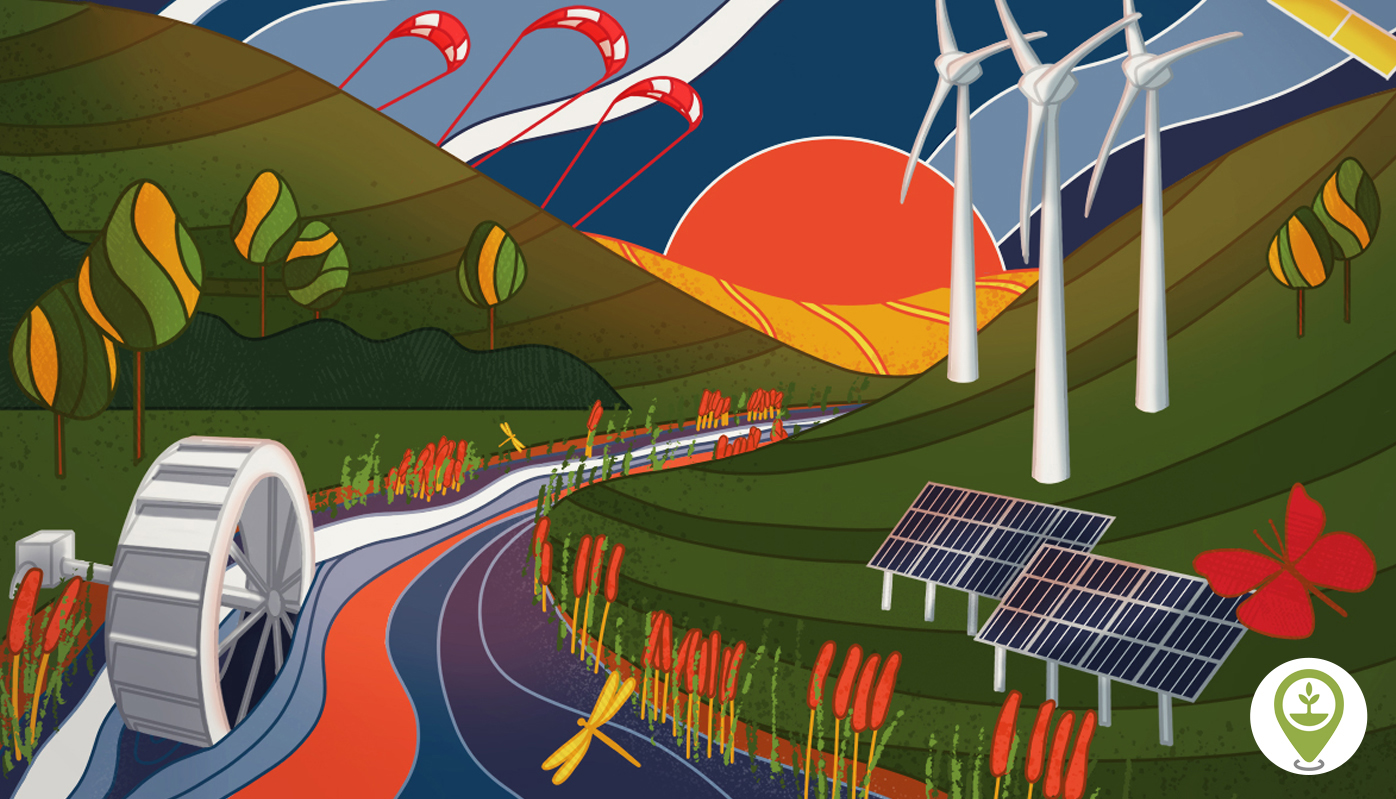Technology: Role in Fighting Climate Change

Introduction: Technology in the Climate Crisis
As climate change impacts grow more visible, technology is stepping up to address these challenges. With innovations in renewable energy, carbon capture, and environmental monitoring, technology is playing a vital role in fighting climate change. From reducing carbon emissions to enhancing energy efficiency, tech offers valuable solutions to reduce the effects of this global crisis. While climate change is a complex issue, tech solutions are essential tools in mitigating its impact.
Renewable Energy Advancements
Renewable energy remains one of the most effective ways to reduce greenhouse gas emissions. Technology has significantly improved the efficiency and affordability of renewable sources like solar, wind, and hydropower.
1. Solar Power
Today, solar energy is a cornerstone in the fight against climate change. Recent advancements in solar panel technology enable more efficient conversion of sunlight into electricity. Additionally, solar installations have become more affordable, encouraging wider adoption in both residential and commercial sectors. Innovations such as solar roofs and portable solar chargers make solar energy accessible to more people than ever before.
2. Wind Power
Similarly, wind energy serves as another essential renewable resource. Modern wind turbines, both onshore and offshore, generate power without producing harmful emissions. Moreover, advances in turbine technology have improved efficiency, making wind power a reliable alternative to fossil fuels. Large-scale wind farms are expanding worldwide, providing clean energy to millions of homes while reducing our collective carbon footprint.
3. Hydropower and Marine Energy
Hydropower, which harnesses energy from flowing water, and marine energy, which utilizes waves and tidal currents, both have immense potential for generating clean electricity. Innovations in turbine design and underwater technology continue to improve efficiency, enabling more countries to tap into these renewable resources. This development allows for sustainable energy generation without harming local ecosystems.
Carbon Capture and Storage (CCS)
While renewable energy is essential for reducing emissions, carbon capture and storage (CCS) focuses on managing existing emissions. CCS technology captures carbon dioxide (CO₂) from industrial sources, preventing it from entering the atmosphere.
1. Carbon Capture
Carbon capture systems extract CO₂ directly from sources like power plants and factories. The captured CO₂ is then compressed and prepared for transportation to storage sites. This process helps prevent emissions from reaching the atmosphere, directly reducing their impact on global warming.
2. Storage and Utilization
After capture, CO₂ is stored deep underground in rock formations to ensure it stays out of the atmosphere. Additionally, some companies are finding innovative uses for captured CO₂, creating products such as fuels and building materials. By combining storage and reuse, this approach turns emissions into valuable resources, enhancing sustainability efforts.
Electric Vehicles (EVs)
Transportation is a major contributor to greenhouse gas emissions, and electric vehicles (EVs) offer a cleaner, greener alternative. By eliminating tailpipe emissions, EVs play a crucial role in the shift toward sustainable mobility.
1. Battery Advancements
Battery technology has rapidly advanced, allowing EVs to travel longer distances on a single charge. Today’s lithium-ion batteries are more efficient, and new materials like solid-state batteries promise even better performance in the near future. These advancements make EVs a more practical option, encouraging more people to make the switch away from gasoline-powered vehicles.
2. Charging Infrastructure
As EV adoption increases, so does the demand for accessible charging stations. Governments and companies are heavily investing in expanding charging infrastructure, making EV ownership more convenient. With the addition of fast-charging stations, EVs are now a viable option for long-distance travel, and charging stations are becoming more common in both rural and urban areas.
Smart Grids and Energy Efficiency
Smart grids and energy-efficient technologies help minimize energy waste, making the most of our resources. By optimizing energy distribution, these systems cut down on emissions and reduce operational costs.
1. Smart Grids
Smart grids are digital networks that monitor and manage electricity usage in real time. They help optimize energy distribution based on demand, minimizing waste. By balancing supply with demand, smart grids reduce the likelihood of power outages and improve reliability. Importantly, they also integrate seamlessly with renewable energy sources, allowing for efficient management of solar and wind power.
2. Energy-Efficient Buildings
Buildings account for a significant portion of energy use, particularly for heating and cooling. Energy-efficient technologies, like smart thermostats, LED lighting, and improved insulation, significantly reduce energy demand. As a result, these innovations lower greenhouse gas emissions and utility costs, contributing to more sustainable urban environments.
AI and Environmental Monitoring
Artificial intelligence (AI) and machine learning are increasingly important for monitoring and managing climate change. By analyzing large datasets, AI assists scientists and policymakers in making informed, data-driven decisions.
1. Climate Modeling
AI-powered climate models predict future climate scenarios based on historical data and simulations. Accurate climate predictions help governments and organizations prepare for climate-related risks such as extreme weather events and rising sea levels, ultimately improving resilience.
2. Deforestation and Biodiversity Tracking
Deforestation contributes significantly to climate change by reducing natural carbon storage. Combined with satellite imagery, AI systems monitor deforestation in real time, allowing authorities to take swift action. AI also tracks biodiversity, helping to monitor endangered species and assess ecosystem health, which is vital for maintaining ecological balance.

Agriculture and Food Sustainability
Agriculture has a substantial environmental impact, but technology can help reduce its footprint. Sustainable farming practices, powered by advanced technologies, promote efficiency and lower greenhouse gas emissions.
1. Precision Agriculture
Precision agriculture employs sensors, drones, and GPS technology to monitor crop health. Farmers can apply fertilizers and water only where necessary, reducing waste and conserving resources. This approach minimizes emissions associated with excessive fertilizer use, making farming more sustainable.
2. Lab-Grown Meat and Alternative Proteins
Traditional meat production contributes heavily to deforestation and greenhouse gas emissions. Lab-grown meat and plant-based protein alternatives offer more sustainable solutions. Lab-grown meat, developed in laboratories, reduces the need for livestock farming. These alternatives help cut methane emissions—a potent greenhouse gas—and preserve natural ecosystems.
Waste Management and Recycling Innovations
Waste is another major source of pollution, particularly methane emissions from landfills. Advanced recycling technologies and waste management systems offer solutions to reduce waste’s environmental impact.
1. Automated Recycling
Automation and AI have improved the efficiency of recycling processes. Robots and sensors now help identify and sort recyclable materials, ensuring more waste is processed correctly. Additionally, automated facilities can handle larger volumes, diverting more waste from landfills.
2. Biodegradable Plastics
Traditional plastics are notoriously slow to decompose, causing lasting environmental harm. However, biodegradable plastics break down much faster, helping to reduce plastic pollution. Recent advancements make these materials more affordable, encouraging their adoption in consumer packaging and everyday products.
The Future of Tech in Climate Action
Looking forward, technology’s role in climate action will continue to expand. From renewable energy to AI-driven solutions, tech is essential to achieving global climate goals. Yet, technology alone cannot resolve climate change. Success will depend on cooperation among governments, businesses, and individuals to drive meaningful, lasting change.
Challenges to Overcome
Despite its benefits, tech-based climate solutions face several challenges. High costs, regulatory hurdles, and public skepticism can all slow progress. Moreover, some technologies, like carbon capture, require significant investment to scale effectively. Tackling these obstacles is crucial for maximizing technology’s impact on climate action.
Conclusion: A Greener Future with Technology
In the fight against climate change, technology provides powerful tools. Renewable energy, carbon capture, electric vehicles, and AI are all essential to creating a sustainable future. Although challenges remain, continued innovation and global cooperation can drive progress. By embracing these advancements, we move closer to a world that prioritizes environmental responsibility alongside growth.





